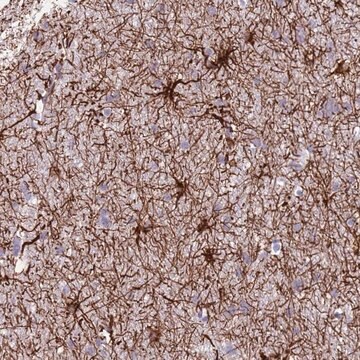04-1571-I
Anti-RNA polymerase II subunit B1 (phospho CTD Ser-2), clone 3E10 (rat monoclonal).
culture supernatant, clone 3E10, from rat
Synonim(y):
DNA-directed RNA polymerase II subunit RPB1, RNA polymerase II subunit B1, DNA-directed RNA polymerase II subunit A, DNA-directed RNA polymerase III largest subunit, RNA-directed RNA polymerase II subunit RPB1
About This Item
Polecane produkty
pochodzenie biologiczne
rat
Poziom jakości
forma przeciwciała
culture supernatant
rodzaj przeciwciała
primary antibodies
klon
3E10, monoclonal
reaktywność gatunkowa
mouse
reaktywność gatunkowa (przewidywana na podstawie homologii)
human (immunogen homology)
metody
ChIP: suitable
ELISA: suitable
western blot: suitable
izotyp
IgG1κ
numer dostępu NCBI
numer dostępu UniProt
Warunki transportu
wet ice
docelowa modyfikacja potranslacyjna
phosphorylation (pSer2)
informacje o genach
human ... POLR2B(5431)
Opis ogólny
Specyficzność
Immunogen
Zastosowanie
Demonstrated to react with human RBP1 in Ni et al., 2011. Transcription 2:5, 237-242
Epigenetics & Nuclear Function
Transcription Factors
Jakość
Western Blotting Analysis: A 1:2,000 dilution of this antibody detected RNA Polymerase II subunit B1 (phospho CTD Ser-2) in untreated NIH/3T3 cell lysate.
Opis wartości docelowych
Powiązanie
Postać fizyczna
Przechowywanie i stabilność
Handling Recommendations: Upon receipt and prior to removing the cap, centrifuge the vial and gently mix the solution. Aliquot into microcentrifuge tubes and store at -20°C. Avoid repeated freeze/thaw cycles, which may damage IgG and affect product performance.
Komentarz do analizy
Untreated and lambda phosphatase treated NIH/3T3 cell lysate
Oświadczenie o zrzeczeniu się odpowiedzialności
Not finding the right product?
Try our Narzędzie selektora produktów.
Kod klasy składowania
10 - Combustible liquids
Klasa zagrożenia wodnego (WGK)
WGK 1
Certyfikaty analizy (CoA)
Poszukaj Certyfikaty analizy (CoA), wpisując numer partii/serii produktów. Numery serii i partii można znaleźć na etykiecie produktu po słowach „seria” lub „partia”.
Masz już ten produkt?
Dokumenty związane z niedawno zakupionymi produktami zostały zamieszczone w Bibliotece dokumentów.
Nasz zespół naukowców ma doświadczenie we wszystkich obszarach badań, w tym w naukach przyrodniczych, materiałoznawstwie, syntezie chemicznej, chromatografii, analityce i wielu innych dziedzinach.
Skontaktuj się z zespołem ds. pomocy technicznej






